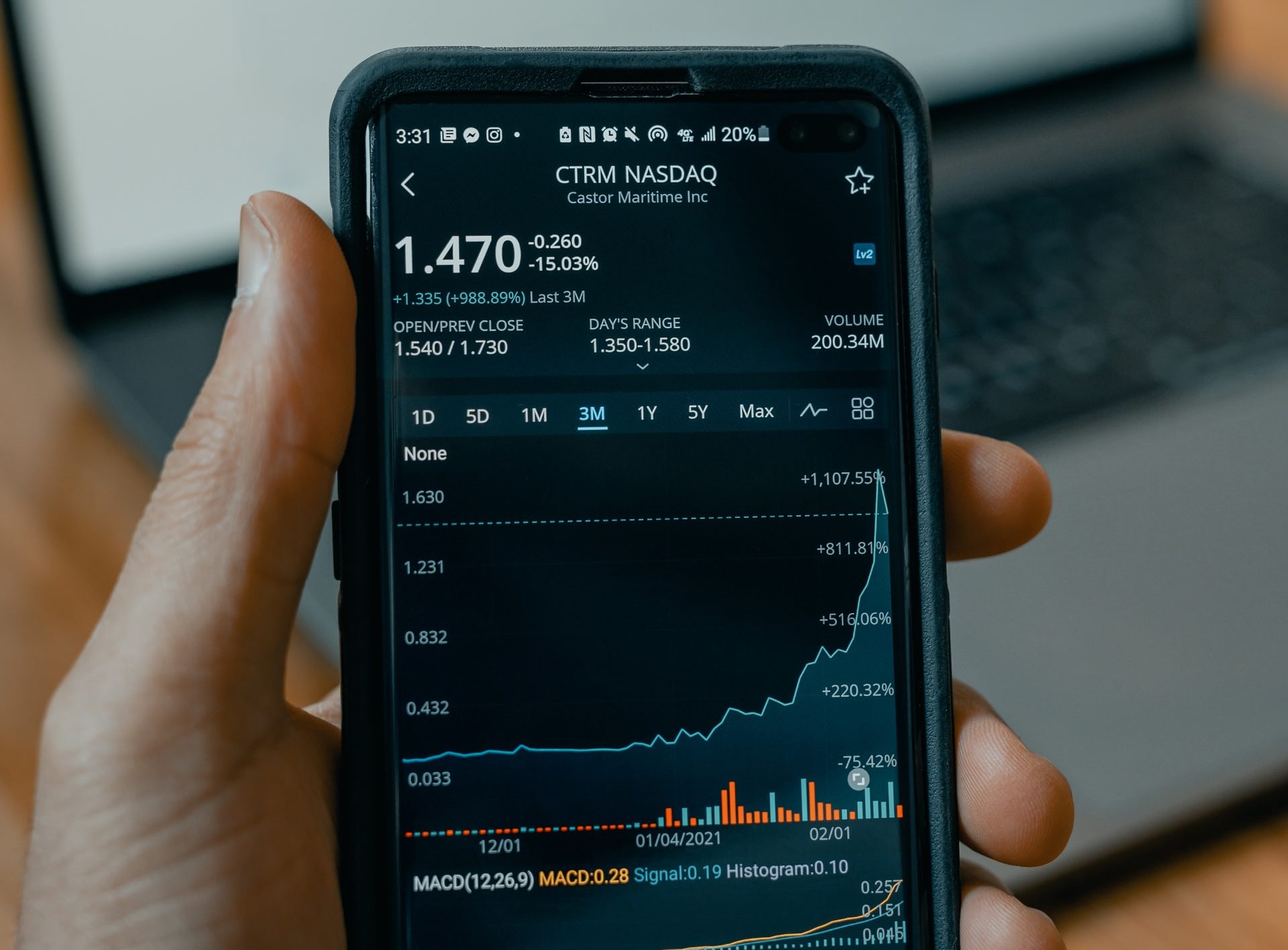How to Trade the NASDAQ 100?
How to trade the NASDAQ 100?
Most experienced traders recognise Nasdaq as a tech-heavy stock index. Nonetheless, few beginner traders understand major indexes composition and how they work.
Nasdaq 100 is one of the leading stock market indexes forming part of the United States stock markets.
This index comprises 100 major individual companies and global non-financial companies by market capitalisation. These include major industry groups, such as computer software and hardware, retail/wholesale trade, telecommunications and biotechnology.
Trading the Nasdaq entails using fundamental and technical analysis to dictate the ideal price levels to initiate a trade. Investors can outline the way the price will move and then place stop losses to manage risks.
This post covers crucial information about how to trade the NASDAQ 100 and Strategies.
What is the Nasdaq 100?
Founded in 1985, the Nasdaq 100 is a stock index that tracks the performance of the top 100 largest technology firms in the US, except for the financial companies.
As a result, it’s a crucial measure of major equity benchmarks and market strength with worldwide appeal. The most capitalised organisations in the Nasdaq 100 index make up a substantial part of the overall weighting

Here are the criteria companies must meet to be listed on the Nasdaq 100:
- A company must have been listed on the wider exchange for at least two years.
- It should have an average daily trade volume of a minimum of 200,000 shares.
- It should timely submit earnings reports, quarterly and annual reports.
- The company must be free of bankruptcy proceedings.
Why Trade the Nasdaq 100 index
Investing in the Nasdaq 100 offers investors an expanded exposure to a wide range of organisations in the non-financial industry. Here are the top reasons why traders opt for the Nasdaq 100 index.
- It is one of the most popular stocks and widely followed indexes. It also has plenty of technical and fundamental analysis
- The Nasdaq offers investors great liquidity that results in tight spreads, which give affordable fees for entering and exiting trades.
- It has clear technical stock charts patterns that offer unique entry and exit signals.
- Investors can invest on the Chicago Mercantile Exchange (CME) almost 24/5.
5 Reasons why Investors trade the NASDAQ 100
The majority of the Nasdaq 100 includes technology stocks, and here are the reasons why investors are picking Nasdaq futures over individual Nasdaq stocks.
- Day Trade the Technology Sector with Little Capital
Nasdaq futures provide a unique chance for tech speculators who are in a dire financial situation. The Pattern Day Trader rule requires one to have at least a balance of $25,000 for a successful day trading experience. - Availability of Leverage and Liquid Trading
Nasdaq futures offer traders considerable buying power that lets them use a small capital to control a substantial contract value. The futures also offer exceptional leverage that exceeds even the most aggressive leveraged Nasdaq exchange-traded funds (ETFs). However, remember that increased leverage is risky. Besides, high liquidity in futures translates to quick trade executions. - Use a Single Instrument to Trade a Whole Sector
Nasdaq futures traders can open positions in a wide range of technology sectors offering a target diversification within a single asset class as opposed to choosing individual stocks. In simple terms, traders can easily trade and track on one future’s contract vs several different stocks concurrently. - Trade Throughout
Nasdaq futures traders can trade 24 hours a day, six days a week, which increases their profit potential. It also allows traders to handle trading positions anytime, especially when there are major news events and releases. - Easily Trade both Market Sides
Futures traders can trade both on the short and long side with no short-selling limitations or uptick regulations, as is the case for stock traders. As a day trader who predicts the Nasdaq to fall, one option would be to sell a position and then go short. The capability to trade the market in two ways is beneficial for all futures investors.
Read Also: What Moves the NASDAQ?
How to Calculate The Nasdaq 100
As said earlier, financial experts use participant’s market capitalisation to calculate the Nasdaq 100. Experts determine the index’s value by multiplying the combined index share weight value of the instruments with every instrument’s last closing price and then dividing by an index advisor. An instrument can only get a maximum of 24% weighting.
An Overview of Index
The Nasdaq price shows whether companies share prices on the index will rise or fall. Rising price action indicates a particular company is enjoying gains while a falling one shows it’s undergoing a price decline.
Top Tips and Strategies for how to trade the Nasdaq 100
A successful trader utilises similar strategies used to invest in futures markets or other financial markets. Before initiating a trade, a trader needs to use a proven strategy that fits the current market performance. An experienced trader will stick to a trading strategy that comprises successful guidelines and principles.
Use Technical Analysis to Trade Index
Traders can use this analysis to analyse charts; they can also search for buy or sell signals. Here is where indicators come in handy in recognising the current trends in the market, probable retracement patterns or shifts in sentiment.
Due to the countless indicators in the market, it would be helpful for traders to pick comfortable and easily understandable indicators. Remember that indicators are not fail-safe , so one should implement appropriate risk management, such as limiting the exposure of all open trades to below 5% of the entire equity, using the proper leverage and following a risk-reward ratio.
Using Fundamental Analysis to Trade the Nasdaq 100
Several existing fundamental variables move the index’s price when trading the Nasdaq 100. Thus, traders should be well-informed about these variables and their potential effect on the index.
Listed below are some of the leading Nasdaq 100 index movers:
- Changes in the central bank’s position regarding the monetary policy can lead to negative impacts on the Nasdaq.
- The biggest companies, such as Apple Inc., Microsoft Corp, and Amazon, on the Nasdaq, seem to move the prices.
- Currency wars and trade wars can affect the largest companies in the index through trade barriers and tariffs.
- Economic data releases, such as interest rates, CPI, employment and GDP, can indicate the federal exchange rules that the government will initiate.
How to trade the Nasdaq 100?
It is advisable to have investment objectives and contact independent advisors for their advice before entering any trade. Before initiating a trade, all traders should determine the amount they wish to risk and have a practical expectation of what they will gain from the trade.

Here are the tips to consider before entering a trade:
- Establish a risk-reward ratio
- Avoid entering into trades before the release of major economic data.
- Record all trades for ease of preview later in the day.
- Avoid trading during boring, tiring, or emotional trading days.
- Pick the perfect market hours, mainly the eastern time.
Which Broker is the best for Trading the NASDAQ?
Well, picking an online broker can be time-consuming because one needs to research and understand the available brokers on the internet. The assumption is that one wants to join the best broker on the internet to prepare for the future and generate potential income without breaking the bank.
When choosing a broker, check the regulation, customer support, trading platforms, transparency, education and research tools, minimum deposits, reviews, and above all, evaluate whether it’s listed in stock exchanges.
tixee is one broker that ticks all these boxes.
Explore the markets with tixee
Traders can stay ahead of the rest when trading the Nasdaq 100 by using the educational resources tixee offers, alongside a user-friendly trading platform. Join the platform today and add the Nasdaq to your trading portfolio.
